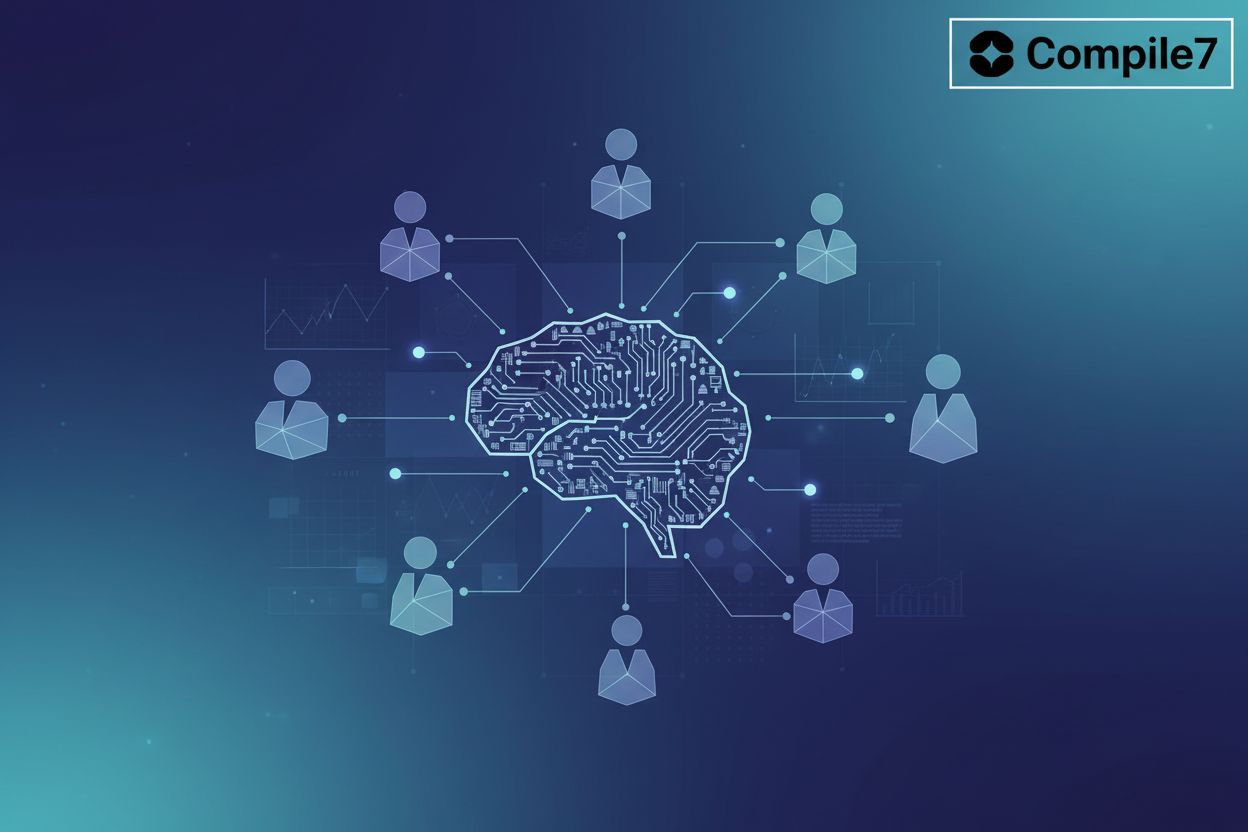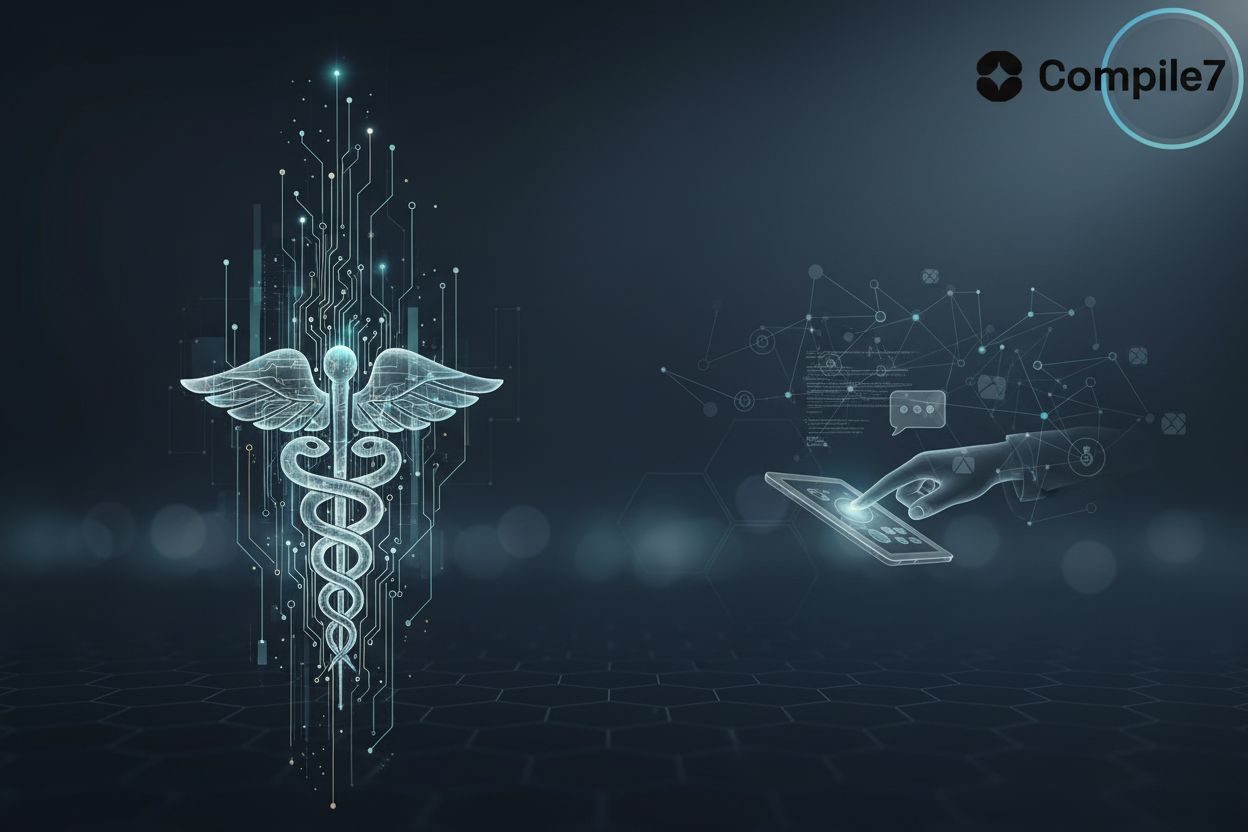Unlocking Business Value: AI-Based Knowledge Graphs for Intelligent Automation
TL;DR
Introduction: The Rise of AI-Based Knowledge Graphs
Knowledge graphs are transforming how businesses leverage data and ai. But what exactly are they, and why are they suddenly so important?
Knowledge graphs provide a structured representation of knowledge, using entities (nodes) and relationships (edges) to model complex information. Unlike traditional databases, knowledge graphs offer a dynamic and intuitive way to explore data, and uncover patterns. The Alan Turing Institute notes that knowledge graphs organize data from multiple sources, capturing information about entities of interest in a given domain or task (like people, places or events), and forge connections between them.
- Reasoning and Context: Knowledge graphs enable ai to reason, understand context, and provide explainable insights.
- Dynamic Exploration: They differ from traditional databases by offering a dynamic and intuitive way to explore data.
- Diverse Applications: Knowledge graphs are used in search engines, chatbots, and recommendation systems. Hypermode says that knowledge graphs are widely used in various fields, particularly for master data management (MDM), recommendation systems, and search and unstructured data analysis.
ai algorithms benefit greatly from the context and structure that knowledge graphs provide. This integration enhances ai's ability to reason and make informed decisions.
- Context for AI: Knowledge graphs provide the necessary context and structure for ai algorithms to function effectively.
- Explainability: They improve ai explainability, addressing concerns about "black box" algorithms.
- Informed Decisions: ai can reason and make more informed decisions.
The use of ai-based knowledge graphs leads to better decision-making and enhanced ai agent capabilities. They also improve data integration and management across an enterprise.
- Improved Decision-Making: Enhanced data insights lead to better business strategies.
- Enhanced AI Agents: ai agents become more capable and can automate more complex tasks.
- Data Integration: Knowledge graphs facilitate better data integration and management across the enterprise.
As ai continues to evolve, the role of knowledge graphs will only increase. Now that we've touched on the basics, let's dive into the different types of knowledge graphs you might encounter.
Understanding Different Types of Knowledge Graphs
Did you know that the type of knowledge graph you choose can significantly impact the success of your ai initiatives? Selecting the right model ensures your ai can function optimally and deliver the desired results.
This section explores three common types of knowledge graphs, each designed to address specific needs in intelligent automation. Understanding these distinctions is crucial for selecting the right framework for your business.
Taxonomy knowledge graphs organize information hierarchically, using a Parent → Child structure. The semantic relationship is usually "has-a" or "includes," indicating that the parent concept encompasses or contains its child concepts. These are great for organizing broad categories, which can help automate tasks like content tagging or basic data categorization.
- Hierarchical Organization: These graphs excel at categorizing information, making it easy to navigate and understand relationships between concepts.
- Semantic Relationships: They focus on semantic relationships, making them ideal for applications where understanding the meaning of data is crucial. For example, the ESCO classification of skills and occupations defines a hierarchy of over 13,000 skills, which can help automate job matching or career path suggestions.
Domain-specific knowledge graphs represent knowledge specific to a particular field. They capture richer semantics than taxonomy graphs by modeling diverse, context-specific relationships such as part-of, knows, or causes. These are super useful for automating complex decision-making within a specific industry, like diagnosing a medical condition or identifying potential supply chain risks.
- Context-Specific Relationships: These graphs model diverse, context-specific relationships, enabling a nuanced understanding of complex domains.
- Complex Reasoning: They allow ai systems to reason, infer, and uncover insights beyond surface-level connections, making them ideal for specialized fields. For example, in healthcare, a domain knowledge graph could connect diseases, symptoms, treatments, and risk factors.
Unified knowledge graphs bring together data from disparate sources, creating a cohesive, comprehensive view of entities and their relationships. They connect structured, semi-structured, and unstructured data, breaking down silos. This is key for intelligent automation because it gives ai a complete picture, allowing it to automate processes that span multiple systems and data types.
- Comprehensive View: These graphs unify information from disparate data sources, creating a cohesive, comprehensive view of entities and their relationships.
- Contextual Layers: They add contextual layers through taxonomies or domain-specific ontologies, enriching the raw data with semantic meaning. For instance, a unified knowledge graph might categorize products in a taxonomy while also connecting these to customer data, transaction histories, or supplier details.
Understanding these different types of knowledge graphs is the first step toward leveraging them for intelligent automation. Now, let's talk about how these graphs actually get built.
Constructing and Maintaining AI-Based Knowledge Graphs
Did you know that a well-constructed knowledge graph can significantly reduce ai hallucinations? Building and maintaining these graphs involves several key processes that ensure ai systems have access to reliable and relevant information.
The first step is identifying relevant data sources, which can be structured (databases), semi-structured (XML, JSON), or unstructured (text documents).
- ai techniques such as Natural Language Processing (NLP) and machine learning play a crucial role in extracting entities and relationships from unstructured data. For instance, NLP models can identify names of people, organizations, and locations in text, while ML algorithms can learn to recognize patterns that indicate a relationship between these entities.
- Data cleaning and transformation are essential to ensure consistency and accuracy across various data sources.
Next, you must define the core concepts, entities, and relationships that will form the foundation of your knowledge graph. This involves:
- Using formal languages like OWL (Web Ontology Language) and RDF (Resource Description Framework) to create a schema that provides a structured framework for the knowledge graph. This ontology acts like a blueprint, defining what types of things exist and how they can relate to each other.
- Ensuring the ontology aligns with specific business needs and supports the intended ai applications.
Choosing the right graph database is critical for storing and managing your knowledge graph.
- Graph databases like Neo4j and Amazon Neptune are designed to efficiently handle complex relationships between data points. Neo4j is a graph database widely used in combination with Generative ai.
- Implementing robust data governance and quality control processes ensures the knowledge graph remains accurate and reliable. This is crucial for automation, as faulty data leads to faulty automated processes.
- Scalability and performance are also key considerations, especially when dealing with large datasets.
Constructing and maintaining ai-based knowledge graphs requires a strategic approach to data integration, ontology development, and storage. As ai models become more complex, the need for well-governed knowledge graphs will only increase. Next, we’ll look at how these graphs can empower ai agents and drive automation.
Leveraging Knowledge Graphs for AI Agents and Automation
ai agents are no longer a futuristic fantasy; they are actively reshaping business operations. But how can organizations ensure these agents are truly intelligent and effective?
Compile7 specializes in developing custom ai agents. These agents automate tasks, enhance productivity, and transform how your business operates.
- Compile7 offers expertise in various ai agents. These include Customer Service Agents providing instant support, Data Analysis Agents uncovering trends, and Content Creation Agents generating engaging material. Also available are Research Assistants accelerating insights, Process Automation Agents streamlining workflows, and Industry-Specific Agents tailored to unique sector needs.
- By integrating knowledge graphs, Compile7's ai agents provide more accurate results. They also offer context-aware and explainable results, ensuring reliability and transparency, which is super important for automating critical business functions.
Knowledge graphs enhance ai agent capabilities. They provide structured knowledge for reasoning and inference.
- ai agents benefit from structured knowledge, allowing them to reason and infer information. This is particularly useful in complex scenarios where agents need to make decisions based on incomplete data, like automating a complex troubleshooting process.
- Knowledge graphs enable agents to access and integrate information from various sources. This comprehensive data access ensures that agents have the necessary context for informed decision-making, leading to more effective automation.
- ai agents can improve decision-making with knowledge graphs. They also enhance the problem-solving abilities of agents, leading to better outcomes and more efficient processes.
Knowledge graphs are vital for automating business processes. They allow modeling of complex workflows.
- Knowledge graphs enable modeling of complex business workflows. This allows for a clear understanding of process dependencies and potential bottlenecks, which is essential for designing robust automated systems.
- Automating tasks like data analysis, reporting, and decision support becomes easier. The knowledge graph provides the context and structure needed for these processes to run efficiently.
- Automation reduces manual effort across various departments. This leads to improved efficiency, reduced costs, and better resource allocation.
By leveraging knowledge graphs, businesses can unlock new levels of intelligent automation. Now, let's explore how these graphs help ai reason better.
Knowledge-Based AI vs. Machine Learning: A Synergistic Approach
Is it possible for ai to be both data-driven and knowledge-driven? Absolutely. The fusion of knowledge-based ai and machine learning is creating more robust and trustworthy ai systems.
Knowledge-based ai and machine learning represent distinct approaches to artificial intelligence.
- Knowledge-based AI: This approach relies on explicit rules and facts provided by experts. Oxford Semantic Technologies says that knowledge-based ai enriches data with knowledge and context to infer accurate insights and perform targeted analysis. It is logic-based, explainable, and reliable, making it ideal for applications where accuracy and transparency are paramount – think regulatory compliance or critical financial analysis.
- Machine Learning: In contrast, machine learning algorithms learn patterns from data. Unlike knowledge-based ai, machine learning is statistical-based, data-driven, and focuses on pattern recognition. It's great for tasks like image recognition or predicting customer churn, but can sometimes be a "black box."
Addressing the limitations of machine learning with knowledge-based ai creates systems that are robust and reliable.
One of the most promising trends in ai is the synergistic combination of knowledge graphs and machine learning.
- Leveraging knowledge graphs to ground machine learning models: Knowledge graphs provide a structured framework that helps machine learning models understand context and relationships. This grounding improves accuracy and reduces the risk of "hallucinations," where ai generates incorrect or nonsensical information. This is crucial for automating tasks where errors can have significant consequences.
- Improving accuracy and reducing hallucinations in LLMs: Large language models (LLMs) can benefit greatly from the structured knowledge provided by knowledge graphs. By grounding LLMs in verifiable facts, knowledge graphs help ensure that generated text is accurate and relevant, making them more reliable for automated content generation or customer interactions.
- Creating more robust and trustworthy AI systems: The integration of knowledge graphs and machine learning leads to ai systems that are both powerful and reliable. This hybrid approach combines the strengths of both paradigms, resulting in ai that can reason, learn, and make informed decisions.
Retrieval-Augmented Generation (RAG) is a technique that enhances the performance of language models by providing them with relevant context from external sources.
- Using knowledge graphs to provide context for LLMs: In RAG, knowledge graphs serve as a rich source of contextual information that language models can use to generate more accurate and relevant responses. Neo4j says that by combining knowledge graphs and vector search, GraphRAG infuses your ai with deep context and multi-hop reasoning for more accurate, relevant, and explainable results. This is a game-changer for automating complex information retrieval and summarization.
- Enhancing the quality and relevance of generated text: By grounding language models in the structured knowledge of a knowledge graph, RAG improves the quality and relevance of generated text. This is particularly useful in applications such as question answering and content creation, where accuracy and coherence are key.
- Implementing RAG for question answering, chatbots, and content creation: RAG can be implemented in various applications to improve the accuracy and relevance of ai-generated content.
The combination of knowledge-based ai and machine learning, particularly through techniques like RAG, is paving the way for more intelligent and reliable ai systems. Next, we’ll look at some real-world examples of how this is happening.
Real-World Applications and Use Cases
ai-based knowledge graphs are rapidly moving from theoretical concepts to practical tools that drive tangible business value. But where are they making the biggest impact right now?
ai-powered chatbots can provide significantly enhanced customer service.
- Knowledge graphs enable chatbots to access a broader range of information and understand context. This leads to more accurate and helpful responses, automating many customer inquiries.
- These chatbots can offer personalized customer experiences by accessing and analyzing customer data within the knowledge graph. For example, a chatbot can recommend products based on past purchases and preferences.
- By efficiently resolving customer inquiries, businesses improve satisfaction and reduce support costs. ai-driven knowledge can instantly answer common questions, allowing human agents to focus on complex issues.
Knowledge graphs are revolutionizing how businesses analyze data and gain actionable insights.
- Organizations can improve data insights and reporting by integrating data from disparate sources into a unified knowledge graph. This provides a comprehensive view of business operations and performance, enabling more automated reporting and analysis.
- Knowledge graphs enhance fraud detection and risk management. By mapping relationships between transactions, entities, and accounts, ai systems can identify suspicious patterns and prevent fraudulent activities, automating risk assessment.
- Businesses can make better decisions by leveraging the comprehensive data analysis capabilities of ai-based knowledge graphs.
Knowledge graphs are transforming how scientists organize and utilize research data.
- They accelerate scientific discovery by organizing and connecting research data. This allows researchers to identify patterns and relationships more efficiently, potentially automating aspects of hypothesis generation.
- Knowledge graphs facilitate collaboration and knowledge sharing among researchers. This enables researchers to access and build upon each other's work and accelerates innovation.
- According to a recent paper in the Journal of Web Semantics, knowledge graphs enable ai to assist in hypothesis generation and experimentation. The Alan Turing Institute has an interest group that facilitates research and innovation in this area.
"For machine learning models to be truly used as a tool for scientific advancement, we have to find ways for the knowledge implicitly gained by these models from their training to be integrated with the explicitly represented knowledge captured through knowledge graphs." - Journal of Web Semantics
As ai-based knowledge graphs continue to evolve, they promise to unlock even greater potential for intelligent automation. Now, let's touch on something super important: keeping that data safe and sound.
Data Governance and Security in AI-Based Knowledge Graphs
As we've seen, ai-based knowledge graphs are powerful tools for intelligent automation. But with great power comes great responsibility, especially when it comes to managing the data within them.
Data governance is all about ensuring the quality, integrity, and usability of your knowledge graph. For ai-based systems, this means:
- Data Quality and Consistency: Ensuring the data fed into the knowledge graph is accurate, complete, and consistent is paramount. Inaccurate data leads to flawed ai reasoning and unreliable automation. This involves establishing clear data validation rules and processes.
- Metadata Management: Understanding the origin, meaning, and lineage of data (metadata) is crucial. This helps ai systems interpret information correctly and allows for better auditing and debugging of automated processes.
- Ontology Management: The schema or ontology of your knowledge graph needs to be well-defined and maintained. This ensures that new data aligns with existing structures and that the ai can consistently understand relationships.
Security is equally critical to protect the sensitive information often contained within knowledge graphs.
- Access Control: Implementing robust access control mechanisms ensures that only authorized users and ai systems can access specific parts of the knowledge graph. This prevents unauthorized data manipulation or leakage.
- Data Encryption: Encrypting data both at rest and in transit protects it from breaches. This is especially important for knowledge graphs that handle confidential business or personal information.
- Compliance: Adhering to relevant data privacy regulations (like GDPR or CCPA) is non-negotiable. Knowledge graphs must be designed and managed to meet these compliance requirements, ensuring automated processes are legal and ethical.
Robust data governance and security practices are not just add-ons; they are foundational to building trustworthy and effective ai-based knowledge graphs for intelligent automation.
Conclusion: The Future of AI and Knowledge Graphs
ai-based knowledge graphs are not just a futuristic concept; they are here to reshape how businesses operate and innovate. How can you stay ahead?
- Graph Neural Networks (GNNs) enable advanced analytics and predictions, allowing for more sophisticated automated insights.
- Semantic Web technologies improve data sharing and interoperability, making it easier to integrate diverse data sources for automation.
- Knowledge graph embeddings enhance machine learning, making ai models more efficient and accurate in understanding complex relationships.
Data quality, complexity, and ethical ai development remain key challenges. Invest in expertise, foster collaboration, and explore new use cases to unlock the full potential of ai-based knowledge graphs.








